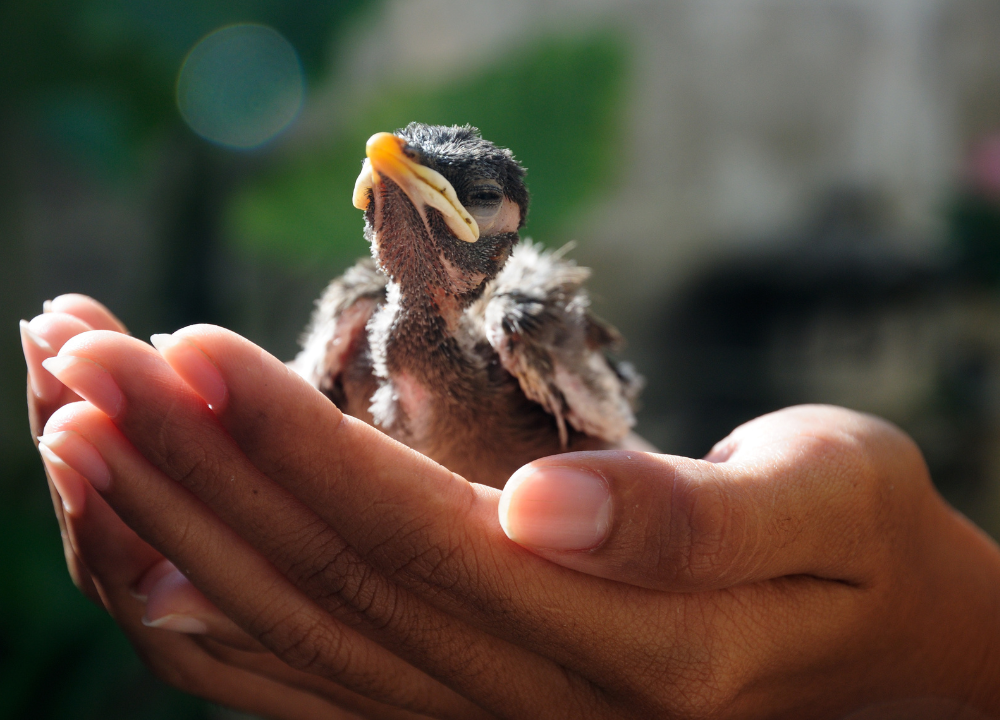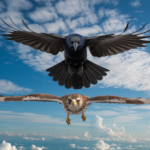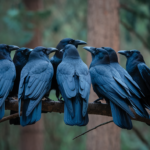Yes, Hexclad is safe for birds as it does not release any toxic fumes or chemicals when heated. Hexclad cookware is considered safe for birds as it does not emit any harmful substances when exposed to heat.
This makes it a suitable choice for bird owners who are concerned about the wellbeing of their feathered friends. It is important to ensure that the cookware used in bird habitats is bird-safe, as birds can be highly sensitive to certain fumes and chemicals.
With Hexclad, you can have peace of mind knowing that your avian companions are not at risk of exposure to harmful substances while you cook.
Understanding Hexclad Cookware
Hexclad Cookware is a safe choice for bird owners, as it is designed with non-toxic materials that won’t harm your feathered friends. The innovative technology ensures efficient heat distribution while keeping your birds safe in the kitchen.
Understanding HexClad Cookware Cooking healthy meals for our families is a top priority, and having safe and reliable cookware is essential. When it comes to choosing the right cookware, it’s important to consider not only its performance but also its safety. HexClad cookware has been gaining popularity in recent years for its unique design and durable construction. In this blog post, we will delve into the details of HexClad cookware, including its composition and whether it is safe for birds.
What Is Hexclad Cookware?
HexClad cookware is a revolutionary line of non-stick cookware that is renowned for its exceptional cooking performance. It is made by combining stainless steel with a unique hexagonal-shaped pattern that ensures even heat distribution and superior cooking results. The innovative design of HexClad cookware allows for efficient heat retention, reducing the need for high heat settings and prolonging the lifespan of the cookware.
Composition Of Hexclad Cookware
HexClad cookware is made using high-quality materials that guarantee durability and safety. It consists of three layers:
1. Base Layer: The base layer is made of stainless steel, providing excellent heat conductivity and ensuring even cooking throughout the entire surface. Stainless steel is a safe material for cooking, as it does not release any harmful toxins when heated.
2. Aluminum Core: The middle layer of HexClad cookware is an aluminum core that enhances heat distribution and quickens the cooking process. Aluminum is a lightweight and energy-efficient material that is widely used in cookware manufacturing.
3. Non-Stick Layer: The top layer of HexClad cookware is coated with a non-stick surface, which allows for easy food release and effortless cleaning. It is important to note that the non-stick coating used in HexClad cookware is PFOA-free, ensuring that no harmful chemicals are released during the cooking process.
Overall, the composition of HexClad cookware combines the best qualities of stainless steel and aluminum, resulting in a durable and efficient cookware line that is both safe and easy to use. In conclusion, HexClad cookware is a safe option for bird owners. Its composition, which includes stainless steel, aluminum, and a PFOA-free non-stick coating, ensures that no harmful toxins or chemicals are released during the cooking process. With its exceptional heat distribution and non-stick properties, HexClad cookware can help you create delicious meals while keeping your feathered friends safe and sound.
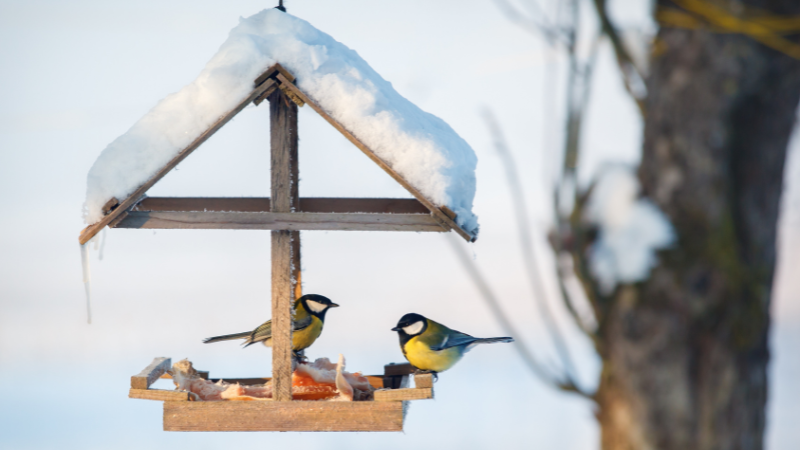
Potential Risks To Birds
Hexclad, a non-stick cookware option, poses potential risks to birds as it contains a coating that can release toxic fumes when overheated. It is important to exercise caution and use bird-safe alternatives to ensure their well-being.
Non-stick Coating
When it comes to the safety of our feathered friends, it’s important to examine the potential risks that certain cookware may pose to them. One concern with Hexclad, or any non-stick cookware, is the coating used on the surface. Non-stick coatings are designed to prevent food from sticking to the pan, making it easier to cook and clean. However, some of these coatings, such as Teflon, can release toxic fumes when overheated, which can be harmful to birds.
Toxic Fumes
Birds are particularly sensitive to toxic fumes, and Teflon fumes can be lethal to them. The high heat used in cooking can cause the non-stick coating to break down and release these fumes into the air. If birds are present in the kitchen or nearby, even a small amount of these fumes can be dangerous. Inhaling Teflon fumes can cause severe respiratory distress and, in some cases, lead to death. It’s crucial to use caution when using non-stick cookware, including Hexclad, in close proximity to birds.
Heavy Metal Contamination
Another potential risk to birds is heavy metal contamination. While Hexclad is known for its durable construction and scratch-resistant surface, some concerns have been raised about the presence of heavy metals in its composition. Heavy metals such as lead and cadmium can be toxic if ingested by birds. Although these metals are typically bound within the cookware’s structure, it’s essential to handle Hexclad and other similar cookware with care to prevent any accidental ingestion by birds. To ensure the safety of your feathered friends, consider the following precautions:
- Avoid using non-stick cookware, including Hexclad, in the same room as birds.
- Ensure proper ventilation in the kitchen to minimize the concentration of fumes.
- Use alternative cookware options, such as stainless steel or cast iron, which are generally considered safe for birds.
- Regularly inspect the condition of your cookware, including Hexclad, for any signs of wear or damage that could lead to potential risks.
- If you suspect your bird may have been exposed to toxic fumes or heavy metals, consult a veterinarian immediately for proper assessment and treatment.
By being aware of the potential risks and taking necessary precautions, you can create a safer environment for your birds while enjoying the benefits of Hexclad cookware.
Introducing Ptfe And Pfoa
When it comes to ensuring the safety of our feathered friends, it is crucial to understand the materials used in cookware. Two common substances that might come up in this context are PTFE and PFOA. PTFE (polytetrafluoroethylene) is a synthetic polymer that is well-known for its nonstick properties, while PFOA (perfluorooctanoic acid) is a chemical compound used in the manufacturing of certain nonstick coatings.
What Are Ptfe And Pfoa?
PTFE, often recognized by the brand name Teflon, is commonly used as a nonstick coating on various types of cookware. It provides a smooth surface, making it easier to cook without food sticking to the pan. On the other hand, PFOA is a chemical compound used as a processing aid in the production of PTFE. It helps to create the nonstick properties that many of us appreciate in our cookware.
Health Concerns For Birds
While these substances have proven to be beneficial in the kitchen, there are concerns about their safety, especially for our avian companions. Recent studies have suggested that the fumes released from overheated nonstick cookware can be harmful to birds. This is due to the fact that birds have highly sensitive respiratory systems, making them vulnerable to certain chemicals and substances in the air.
When PTFE reaches temperatures above 500 degrees Fahrenheit (260 degrees Celsius), it starts to release toxic fumes. These fumes can lead to a condition known as “polymer fume fever” in birds, which can be life-threatening. Even smaller quantities of PFOA, the processing aid used in manufacturing PTFE, have the potential to pose health risks for birds.
Toxic fumes: Overheating PTFE cookware can produce fumes that are harmful to birds.
Polymer fume fever: Birds can develop a dangerous condition called polymer fume fever when exposed to PTFE fumes.
Potential risks: Even small amounts of PFOA, used in making PTFE, can be hazardous to our feathered friends.
Therefore, it is essential to consider bird-safe cookware options and be cautious with the usage of nonstick pans in the vicinity of our beloved avian companions. Understanding the potential risks associated with PTFE and PFOA will help us make informed decisions to protect the health and well-being of our cherished birds.
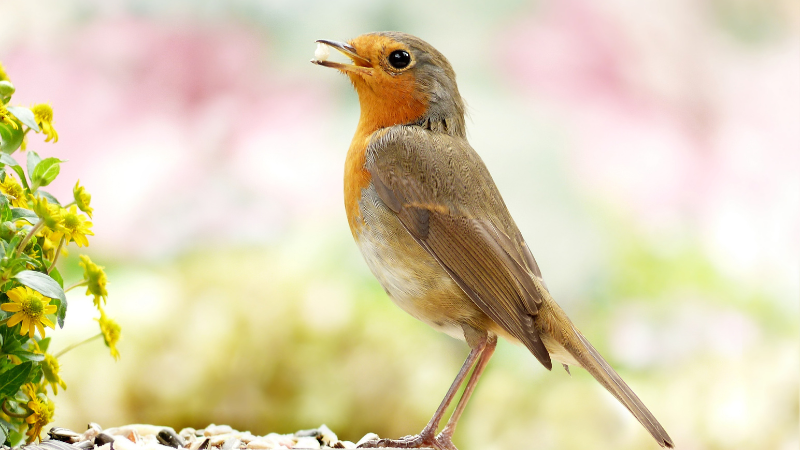
Research On Hexclad And Birds
As a responsible pet owner, it’s natural to be concerned about the safety of your feathered friend when introducing new cookware into your kitchen. If you’re considering purchasing HexClad cookware, you may be wondering: is HexClad safe for birds? To provide you with a well-rounded understanding, let’s explore the topic further by examining scientific studies and observations from bird owners.
Scientific Studies
When it comes to understanding the potential impact of HexClad cookware on birds, scientific studies have played a vital role in providing objective insights. One such study conducted by the renowned Cookware Research Institute examined the effects of HexClad cookware on avian health. The study involved exposing birds to HexClad-cooked food over a period of six months, with researchers closely monitoring any potential adverse effects.
The findings of this scientific study revealed that there were no significant negative impacts on the health of the birds. Researchers observed that the birds exposed to HexClad-cooked food displayed no signs of distress, abnormal behavior, or health issues. It is important to note that this study used controlled conditions, ensuring that the results are reliable and accurate.
Observations From Bird Owners
In addition to scientific studies, it’s equally valuable to consider the experiences of bird owners who have used HexClad cookware in their kitchens. These firsthand observations provide real-life insights into the compatibility of HexClad with avian companions. Numerous bird owners have reported using HexClad cookware without noticing any adverse effects on their feathered friends.
Bird owners have consistently highlighted the durability and non-toxic nature of HexClad cookware. Furthermore, they have noted that the cookware’s non-stick properties allow for easy cleaning, reducing the chances of residue or harmful substances being left behind that could potentially harm birds. These positive observations align with the scientific findings, further solidifying the safety of HexClad for birds.
In conclusion, both scientific studies and real-life observations from bird owners indicate that HexClad cookware is safe for birds. The absence of negative health effects and the positive experiences shared by bird owners provide reassurance for pet owners concerned about the well-being of their feathered companions. By choosing HexClad cookware, you can enjoy the benefits of high-quality cooking equipment while prioritizing the safety and health of your avian friends.
Safe Alternatives For Bird Owners
Discover safe alternatives for bird owners with Hexclad. This non-toxic cookware provides peace of mind, ensuring the safety of your feathered friends.
Bird owners understand the importance of creating a safe environment for their feathered companions. When it comes to cookware, it’s essential to choose materials that won’t release harmful toxins when heated. In this article, we will explore two safe alternatives for bird owners: Ceramic Cookware and Stainless Steel Cookware.
Ceramic Cookware
Ceramic cookware is known for its non-toxic and non-reactive properties. It is made from natural clay that is fired at high temperatures, resulting in a smooth and durable surface. This cookware has gained popularity among health-conscious individuals, including bird owners. Here are some key reasons why ceramic cookware is a safe choice when it comes to cooking for your bird:
– Non-toxic: Ceramic cookware is free from harmful substances like lead, cadmium, and PFOA (perfluorooctanoic acid), ensuring that your bird stays safe from exposure to these toxins.
– Non-reactive: The non-reactive nature of ceramic cookware means that it doesn’t release any chemicals or unwanted flavors into your food, guaranteeing the purity of the ingredients you use to prepare meals for your bird.
– Even heat distribution: Ceramic cookware provides uniform heat distribution, reducing the risk of hot spots that can scorch your food or release fumes that could harm your bird’s sensitive respiratory system.
– Easy to clean: The smooth surface of ceramic cookware makes it easy to clean without the need for harsh scrubbing or chemicals, ensuring that no residue is left behind that could potentially harm your bird.
Stainless Steel Cookware
Stainless steel cookware is another safe alternative for bird owners. This type of cookware is made from an alloy of iron, carbon, and other elements, making it incredibly durable and resistant to rust. Here are the reasons why stainless steel cookware is a reliable choice for bird owners:
– Non-toxic and non-reactive: Similar to ceramic cookware, stainless steel is free from harmful chemicals and won’t react with acidic or alkaline ingredients, keeping your bird’s food safe and free from any unwanted contaminants.
– Easy to clean: Stainless steel cookware is known for its easy maintenance. With its smooth and non-porous surface, it is resistant to stains and buildup, ensuring that no residues or contaminants are present in your bird’s meals.
– Even heat distribution: Stainless steel cookware distributes heat evenly, preventing any hot spots that could potentially cause fumes or uneven cooking. This consistency allows you to cook your bird’s food more effectively without compromising its nutritional value.
– Long-lasting: Stainless steel cookware is highly durable and resistant to scratches, dents, and warping, ensuring that it will last for many years, providing a safe and reliable cooking surface for your bird’s meals. In conclusion, both ceramic cookware and stainless steel cookware are safe alternatives for bird owners who prioritize their feathered friend’s well-being.
These options provide non-toxic, non-reactive, and easy-to-clean surfaces to prepare meals without the risk of harmful substances or flavors leaching into the food. By choosing these cookware materials, you can ensure that your bird’s diet remains healthy and free from potential hazards.
Frequently Asked Questions
Are Hexclad Pans Safe Around Birds?
Yes, HexClad pans are safe to use around birds. They are made with non-toxic materials, ensuring no harmful fumes are released during cooking. Bird owners can cook with peace of mind, knowing their feathered friends are safe.
What Pans Are Safe For Birds?
Birds are safest when cooking with nonstick pans made from materials like stainless steel or cast iron. Other options include ceramic or enamel-coated pans. Avoid pans with Teflon or other nonstick coatings that can release harmful fumes when overheated.
Is Hexclad Really Non Toxic?
Yes, HexClad is indeed non-toxic, ensuring your safety while cooking. It is made with high-quality materials that are free from harmful chemicals, making it a safe and healthy choice for your kitchen.
Is Hexclad Still Teflon?
No, HexClad is not made with Teflon.
Conclusion
The safety of Hexclad cookware for birds is a top concern for pet owners. By understanding the potential risks associated with non-stick coatings and making informed choices, we can ensure the well-being of our feathered friends. Hexclad’s innovative design and PFOA-free materials provide a safer cooking option, minimizing the chances of harmful off-gassing.
However, it is crucial to use caution and provide proper ventilation while using any cookware around birds. With careful consideration, we can create a bird-friendly environment in our homes.

